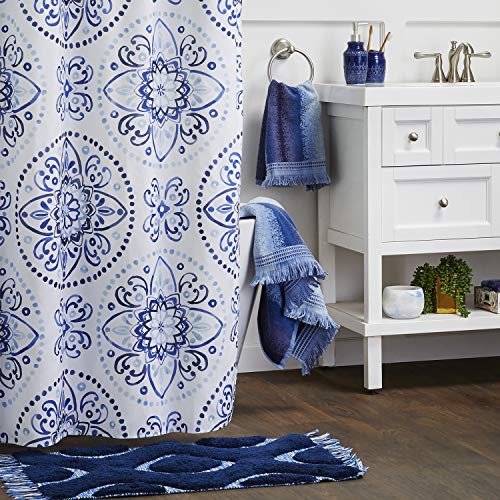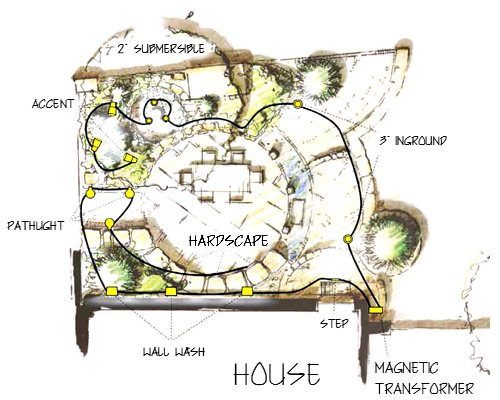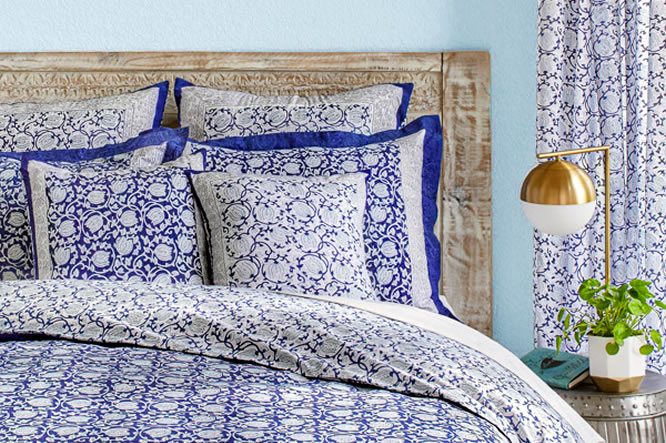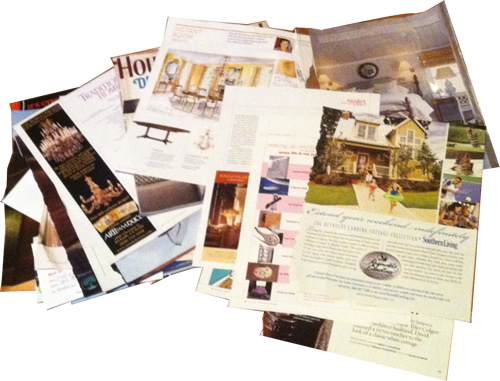My Favorite Book on Making Curtains and Blinds
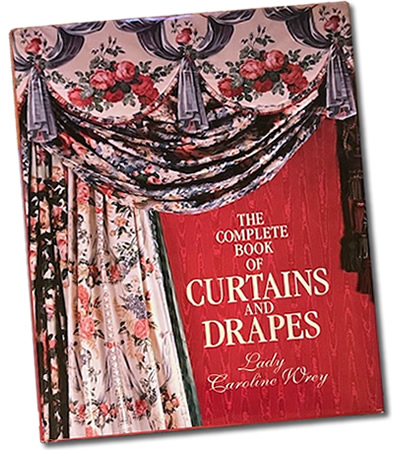
If you want to sew your own curtains, modify store-bought curtains, make window blinds or valances, or really any window treatment at all, this book will tell you how. The instructions are clear, step-by-step, logical and very well illustrated.
The Complete Book of Curtains and Drapes by Lady Caroline Wrey on Amazon
Curtains are one of the most crucial aspects of the interior decoration of any home. Because a window is so often the major focal point within a room, its treatment deserves careful thought and attention. Although you might be tempted to make your own curtains (also sometimes called ‘draperies’ in the United States), you may well feel that you lack the necessary confidence, essential skills and trade secrets. In this book I teach you all you need to know to make your own stunning, thoroughly professional curtains – beginning, in this chapter, with creating your own window treatment designs.*
These are the chapter headings.
- Creating the Perfect Look
- Materials and Trimmings
- Before You Begin
- Making a Start
- Curtain Projects
- Creating Pelmets (or valance)
- Swags and Tails
- Austrian and Roman Blinds
- Tie-backs, Rosettes and Bows
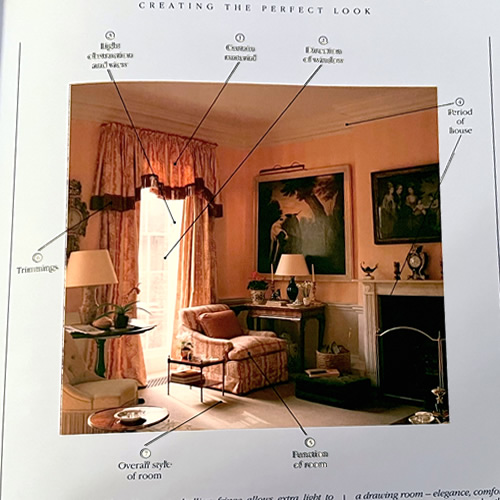
Creating the Perfect Look – The 7-Prong Design Plan
“This window treatment is successful because all of the aspects of the 7-Prong Plan have been carefully considered.”
1. Curtain material
2. Direction of window
3. Light obstruction and view
4. Period of house
5. Function of room
6. Trimmings
7. Overall style of room
The Complete Book of Curtains and Drapes by Lady Caroline Wrey on Amazon
The book begins with how to decide what curtains are best for the window. I had written these in my notes so long ago, I thought I came up with them. I probably copied them out of this book when I checked it out of the library.
Think about these points before you begin, even if you already know what you want.
The 7-Prong Design Plan
As a guide to designing window treatments, I have developed what I call the ‘7-Prong Plan’. It covers the seven aspects of your window treatment that you must consider simultaneously when composing your design:
- Curtain material
- Direction of window
- Light obstruction and view
- Period of house
- Function of room
- Trimmings
- Overall style of room
By ignoring any one of the seven parts of the plan you will risk creating an unsettling effect.
This is what she means by each “prong”.
Curtain Material: What color, texture or print do you want? The same color or print is often available in a lot of types of fabric. The fabric has to work with the rest of the aspects of the window treatment. “Chintz reflects light better than linen.”*
Direction of Window: What direction does the window face? What color is the light a different times of the year? The window in the example above faces east. The window treatment diffuses the light.
Light Obstruction and View: What colors are outside the window? Is the view pretty? How much light is there at different times of the day?
Period of House: The example above shows how the style and proportions of the classical drapes and pelmet fit well with this traditional room.
Function of Room: The example room above is a formal drawing room. The window treatments are elegant and luxurious, while the room stays cozy and inviting.
Trimmings: “… the final icing on the cake. They are the detail on your window treatment that will cause the greatest impact…” The book shows how to make frills, pleats and ruffles. Or add contrasting binding, fringe or other details.
Overall Style of Room: The window treatments should be a focal point, contributing to the balance of the whole room.
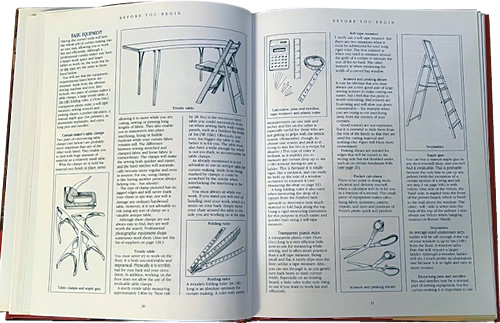
Basic Equipment
The Complete Book of Curtains and Drapes by Lady Caroline Wrey on Amazon
Before You Begin
Before you buy fabric, you really need to know how much fabric you will need. This chapter lists the basic tools and equipment you will need to calculate how much materials you will need for each project. It also explains what you will need to install a pelmet board and curtain rods.
Pelmet: Lady Caroline Wrey loves pelmets. A pelmets is what I have always called valance or cornice board. Wikipedia says; “A pelmet (also called a “cornice board”) is a framework placed above a window, used to conceal curtain fixtures. These can be used decoratively (to hide the curtain rod) and help insulate the window by preventing convection currents. It is similar in appearance to a valance, which performs the same function but is made of fabric. A pelmet can be made of plywood, and may be painted, or fabric covered.”
Having the correct tools will turn the whole job of curtain making into an easy task, allowing you to work fast and efficiently. Although a professional curtain maker may have a larger work space and larger tables to work on, the tools that he or she uses are the same as those listed below. You will see that the equipment requirements listed below are minimal. Aside from the obvious sewing machine and iron, they include: two pairs of curtain maker’s table clamps, a large trestle table, a 2m (6ft) folding ruler, a 15cm (bin) transparent plastic ruler, a soft tape measure, sewing scissors and pinking shears, a pocket calculator, a manual staple gun (for pelmets), an aluminium stepladder, and extra-long pins and needles.
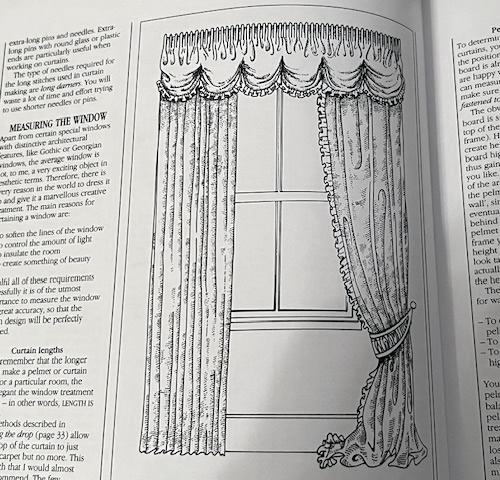
Curtain Length
Floor-length and extra-long curtains
The Complete Book of Curtains and Drapes by Lady Caroline Wrey on Amazon
Measuring the Window
Measure the actual window. Then decide how much of the wall will also be under the curtains. Will your drapes puddle or pool on the floor?
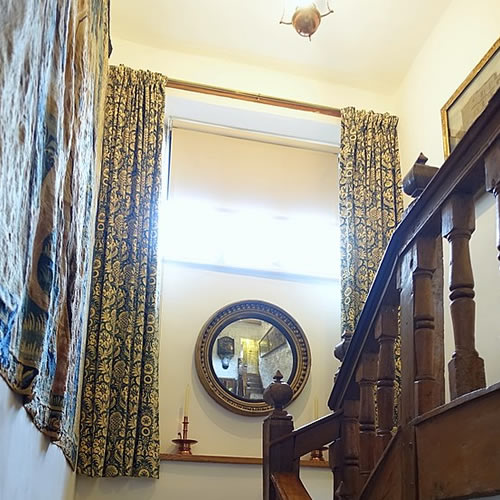
Photo by Daderot
Puddled Drapes?
I measured my living room drapes to have a lovely puddle, but they shrunk when I washed them. I had pre-washed the velvet before I sewed them, but they shrunk anyway. It is all cotton velvet and evidently it had some shrink left in it.
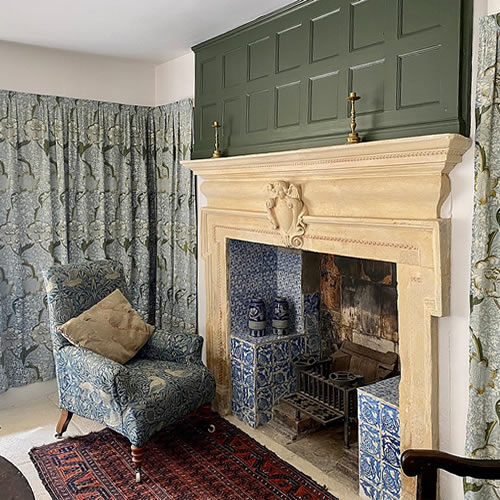
Photo by No Swan So Fine
Then I read the story of William and Jane Morris, How We Might Live: At Home with Jane and William Morris by Suzanne Fagence Cooper (on Amazon). The book had photos of their homes. NONE of their curtains puddled. They didn’t even go to the floor. Mostly they were just long enough to cover the windows.
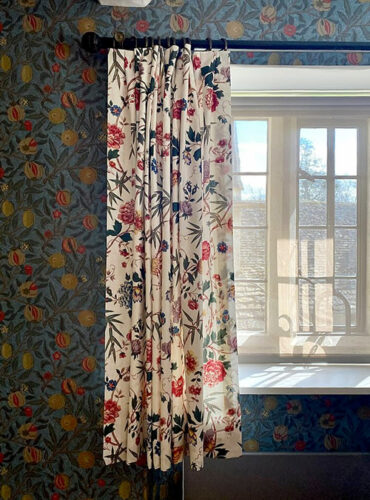
Photo by No Swan So Fine
You can find a lot of photos of Kelmscott Manor. Curtains are all different lengths, but none are longer than floor length and extend onto the floor. It may be dramatic and opulent, but I may just get over it.
Disadvantages of Extra-long Curtains
In some instances adding an extra 15cm (6in) onto full-length curtains can look very lavish and full. But there are four great disadvantages to these extra-long curtains:
- The curtains do not hang as well as when they just come to the floor.
- You have to take trouble to dress, or arrange, them every day.
- Pets come and lie on them.
- It is hard to run the vacuum around them.
So it is as well to keep these disadvantages in mind before embarking on making extra-long curtains.
So, I am going to leave my shrunk curtains the length they shrunk to.
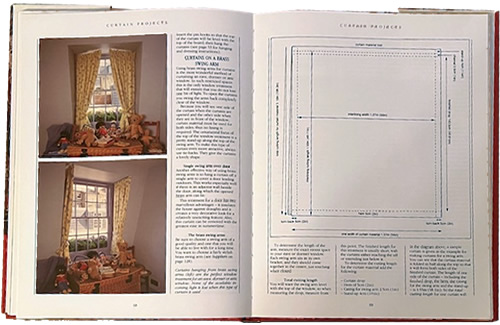
Curtains on a Brass Swing Arm
“Curtains hanging from brass swing arms are the perfect window treatment for and eave, dormer or attic window. None of the available incoming light is lost when this type of curtain is used.”
The Complete Book of Curtains and Drapes by Lady Caroline Wrey on Amazon
Curtain Projects
This section has a lot of photos and explanations on how to make every type of curtains. It includes curtains with and without a pelmet. It shows how to make French-pleated, goblet-pleated, and slotted headings. It walks you through a Velcro heading with a stand-up and curtains with both sides finished for swing arm curtain rods. it illustrates pelmets and alternatives like poles and rings (my favorite), covered-fascia boards and swing arm rods.
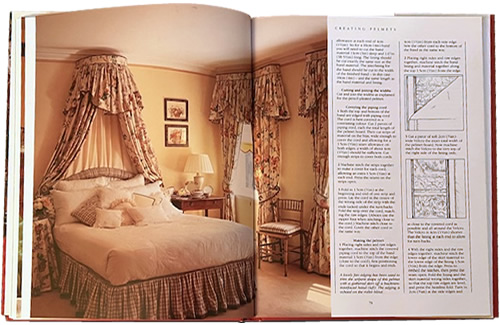
Windows and bed dressed with pelmets
Creating Pelmets
“A lovely fan edging has been used to trim the serpent shape of this pelmet with a gathered skirt off a buckram-interfaced band. The edging is echoed on the roller blind.”
The Complete Book of Curtains and Drapes by Lady Caroline Wrey on Amazon
Creating Pelmets
The author absolutely loves pelmets. “It ‘crowns’ and finishes off the window with such style.” This chapter has tips on achieving the right proportions that looks balanced to window and the rest of the room.
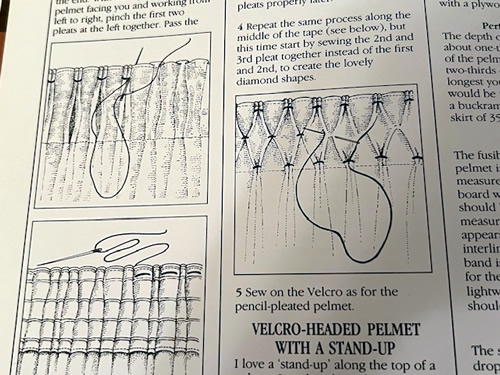
Creating a smocked-headed pelmet
The Complete Book of Curtains and Drapes by Lady Caroline Wrey on Amazon
The instructions are detailed and easy to follow. There are some variations you might never have seen before.
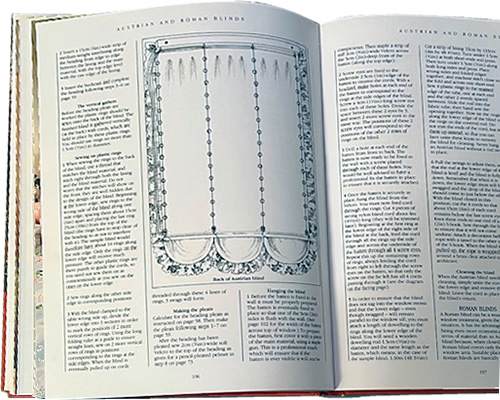
Back of Austrian Blinds
The Complete Book of Curtains and Drapes by Lady Caroline Wrey on Amazon
Austrian and Roman Blinds
Blinds can be surprisingly easy to make. This book has easy projects to show you what you need to know to make your own. It also has variations to make the look your own.
Fabric is expensive. Often it costs less to buy curtains larger than you need, then cut and sew them into something custom. Another option is to use sheets. A great way to get a custom look with less cost, time and effort is to buy your drapes from Amazon or wherever and buy an extra panel to sew into a blind.
Lady Caroline Wrey
Lady Caroline Wrey has written other books. You can find them on Amazon or eBay or at your local library.
- The Complete Book of Curtains and Drapes on Amazon
- Caroline Wrey’s Complete Curtain-Making Course on Amazon
- Secrets for Successful Entertaining: How to Be a Perfect Hostess on Amazon
- The Complete Book of Bedroom Elegance on Amazon
- Designs for Window Treatments: Over 100 Styles for Curtains and other Soft Furnishings on Amazon
Lady Caroline Wrey Books on Amazon
She and her husband also have a Bed & Breakfast and Stable, Hollamoor Farm, in Tawstock, Barnstaple, North Devon.
Your hosts, Caroline and George, welcome you to come and stay on their beautiful, eighteenth century farmhouse, bed and breakfast (B&B), where you will be treated to luxurious bedrooms and a delicious farmhouse breakfast that is home grown or locally sourced.
Sir Bourchier and Lady Caroline Wrey’s home was built in 1740 by the Wrey family who lived on a large estate locally; the family arrived in Tawstock, from St Ives in Cornwall in 1640 when the Wreys married Lady Anne Bourchier from a very old Norman family who came over in 1066. Sir Bourchier is the 15th baronet and has 2 sons, a daughter and a new daughter-in-law!
George runs a property company and a private shoot, while Caroline is an interior designer and presently teaches dyslexic children when not running the farm and the livery yard.
This is a full-time working farm with sheep and cows grazing peacefully in the valleys, whilst pheasants are reared, for the private family shoot, and horses and ponies thrive.
The lakes are surrounded by thick woodlands which support a shy roe-deer population together with otters, rabbits, foxes, badgers, roedeer and many other woodland creatures incorporating a vast bird population of birds and ducks including snipe and kingfishers.
* All quotes are from The Complete Book of Curtains and Drapes by Lady Caroline Wrey on Amazon unless stated otherwise.
Discover more from my design42
Subscribe to get the latest posts sent to your email.

